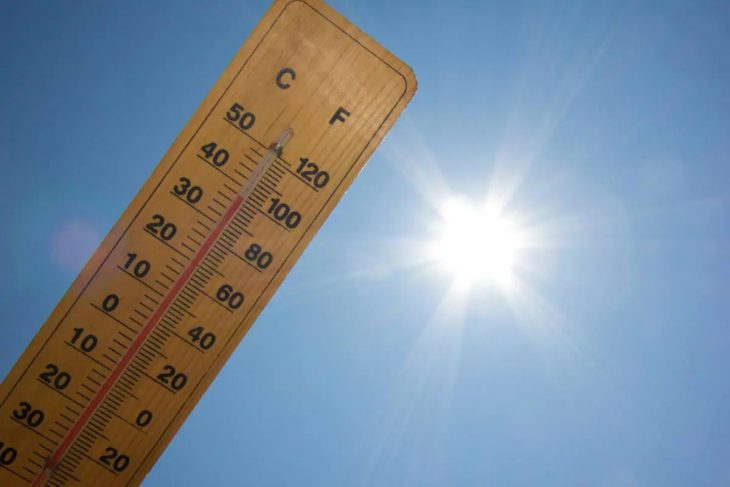
Temperature is a fundamental concept in the realm of science and everyday life. It plays a crucial role in our comfort, health, and the functioning of the natural world. In this article, we will delve into 18 interesting facts about temperature, exploring its measurement, effects, and fascinating phenomena. Let’s embark on a journey to uncover the secrets of heat and cold.
Temperature and Molecular Motion
Temperature is a measure of the average kinetic energy of the molecules in a substance. As temperature increases, molecules move faster and collide more frequently, resulting in higher energy levels.
The Celsius Scale
The Celsius scale is a widely used temperature scale. It sets the freezing point of water at 0 degrees Celsius (°C) and the boiling point at 100°C at standard atmospheric pressure.
The Fahrenheit Scale
The Fahrenheit scale is another common temperature scale, mainly used in the United States. It sets the freezing point of water at 32 degrees Fahrenheit (°F) and the boiling point at 212°F at standard atmospheric pressure.
Absolute Zero
Absolute zero is the lowest temperature possible, theoretically corresponding to zero Kelvin (K) or approximately -273.15°C. At this temperature, the molecular motion ceases, and all thermal energy is absent.
Converting Temperature Scales
To convert temperatures between Celsius and Fahrenheit, you can use the following formulas:
- Celsius to Fahrenheit: °F = (°C × 9/5) + 32
- Fahrenheit to Celsius: °C = (°F – 32) × 5/9
The Kelvin Scale
The Kelvin scale is an absolute temperature scale commonly used in scientific research. It is based on the properties of gases and sets absolute zero at 0 Kelvin.
The Effect of Temperature on Solids
Temperature affects the behavior of solids. As temperature rises, solids generally expand due to increased molecular motion. Conversely, as temperature decreases, solids contract and become more compact.

The Expanding and Contracting of Liquids
Unlike solids, some liquids expand as they freeze. Water, for example, expands upon freezing, leading to the formation of ice and the potential for damaging pipes and containers.
The Gas Laws
Temperature is a key factor in the gas laws that govern the behavior of gases. These laws, including Boyle’s Law and Charles’s Law, describe the relationships between temperature, pressure, and volume of gases.
Temperature and Human Comfort
Temperature greatly influences human comfort. The ideal room temperature for most individuals falls within a range of 20-22°C (68-72°F). However, personal preferences and factors like clothing, humidity, and activity level can affect individual comfort levels.
Temperature and Thermoregulation
The human body maintains its internal temperature through a process called thermoregulation. When the external temperature is hot, the body sweats to cool down, while in cold temperatures, it shivers to generate heat.
Temperature and Weather
Temperature plays a vital role in weather patterns. The unequal heating of the Earth’s surface leads to the formation of air currents, resulting in winds, storms, and atmospheric phenomena like hurricanes and tornadoes.
Temperature and Climate Change
Climate change refers to long-term shifts in temperature patterns on Earth. Global warming, a significant aspect of climate change, is primarily caused by human activities that release greenhouse gases, leading to an overall increase in global temperatures.
The Effect of Temperature on Chemical Reactions
The temperature has a profound impact on the rates of chemical reactions. As temperature increases, the speed of reactions generally accelerates due to the greater kinetic energy of the reacting molecules.

The Temperature of Outer Space
Outer space is an extreme environment with incredibly low temperatures. In most parts of space, temperatures approach absolute zero, making it a vast reservoir of coldness.
Temperature and Thermal Expansion
Temperature affects the expansion and contraction of various materials. This principle is harnessed in applications like the bimetallic strip, which consists of two metals with different expansion rates and is used in thermostats and other devices.
Temperature Measurement Devices
Various devices are used to measure temperature accurately. These include thermometers, thermocouples, resistance temperature detectors (RTDs), and infrared thermometers, each with its own principles and applications.
The Influence of Temperature on Biological Processes
Temperature profoundly affects biological processes. Organisms have specific temperature ranges within which they can function optimally. Deviations from these ranges can impact biological functions, growth, and even survival.
Conclusion
In conclusion, temperature is a fascinating aspect of our physical world. It governs numerous natural phenomena, influences our daily lives, and plays a crucial role in scientific research. From the measurement of temperature to its effects on materials, living organisms, and the environment, understanding temperature is essential for comprehending the intricacies of the world around us.
Frequently Asked Questions (FAQs)
How is temperature measured?
Temperature is measured using devices such as thermometers, which rely on the thermal expansion of materials or the detection of infrared radiation.
What is the difference between temperature and heat?
Temperature is a measure of the average kinetic energy of molecules, while heat refers to the transfer of energy between objects due to temperature differences.
What is the hottest temperature ever recorded on Earth?
The highest recorded temperature on Earth was 56.7°C (134°F) in Death Valley, California, USA, on July 10, 1913.
What is thermal equilibrium?
Thermal equilibrium is a state in which two objects or systems have the same temperature, resulting in no net heat transfer between them.
Can temperature affect the taste of food?
Yes, the temperature can significantly impact the taste of food. For example, cold temperatures can dull taste sensations, while hot temperatures can enhance certain flavors.
Was this page helpful?
Our commitment to delivering trustworthy and engaging content is at the heart of what we do. Each fact on our site is contributed by real users like you, bringing a wealth of diverse insights and information. To ensure the highest standards of accuracy and reliability, our dedicated editors meticulously review each submission. This process guarantees that the facts we share are not only fascinating but also credible. Trust in our commitment to quality and authenticity as you explore and learn with us.
